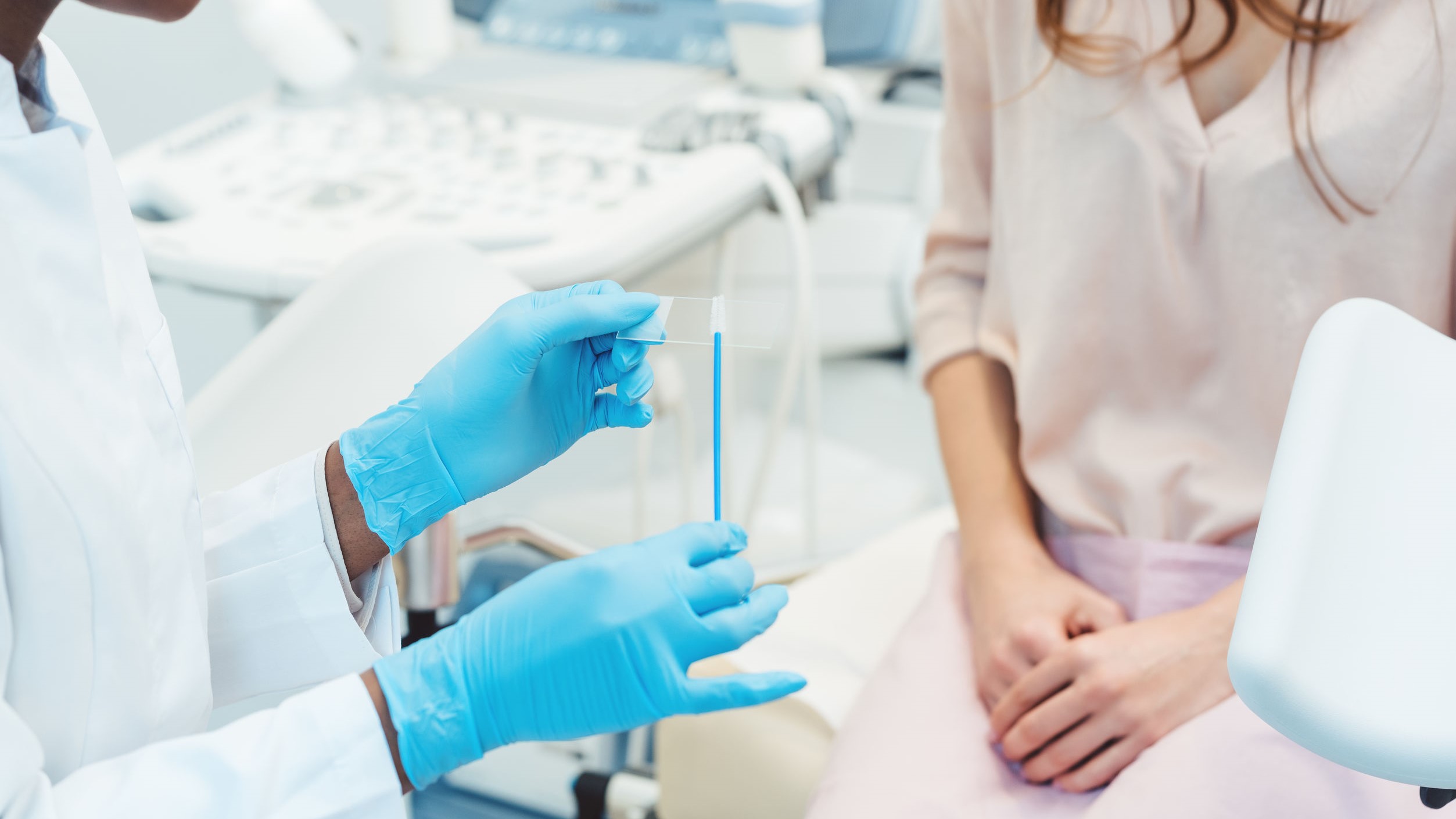There are over 30 different bacteria (Chlamidia trachomatis, Ureaplasma urealiticum, Micoplasma hominis), viruses (HPV, HSV, HIV, hepatitis B и C) and parasites ( Sarcoptes scabiei, Phthirius pubis ) transmitted through intercourse. Sexually transmitted diseases are significant, because they are very common, widespread and its possible consequences might cause infertility, ectopic pregnancy, negative impact on pregnancy, illness or death of the fetus, etc.
Human papillomavirus (HPV)
Today, there are more than 150 known types of HPV, and about 40 of them cause changes in the genitals. Usually the HPV infection occurs spontaneously as a result of the immune response of the infected person (in about 90% of cases, after two years of infection). Genital HPV  infections can be manifested in different ways . The most common visible changes manifest as pointed or flat warts. There are invisible changes that can be detected only by special techniques of magnifying and coloring. It is the so called intraepithelial neoplasia (premalignant condition) of the neck, uterus, vagina, vulva, penis, scrotum and anus. These changes usually manifest no symptoms. Persistent incurable chronic HPV infection in women can lead to the development of cancer of the cervix/neck of the uterus, vagina and vulva, and penis in men.
Proper diagnosis of HPV is very important and is crucial for the patient’s further treatment. The latest test with Multiplex real-time TOCE PCR technology for high-sensitivity and specific molecular detection and genotyping of the HPV virus (Human Papillomavirus) are availabe in Avicena Laboratory. The only qualitative and semiquantitative clinical proven test recommended by the WHO. This test makes detection and individual genotyping of the following types of HPV:
> 19 High- Risk HPV Tipes
(16, 18, 26, 31, 33, 35, 39, 45, 51, 52, 53, 56, 58, 59, 66, 68, 69, 73, 82)
> 9 Low – Risk HPV Tipes
(6,11, 40, 42, 43, 44, 54, 61, 70)
The above-mentioned HPV genotypes are responsible for over 97% of cases of cervical dysplasia and cervical cancer. The tests have internal control based on the detection of the human β-globin gene, which completely eliminates the possibility of false-negative results.
The tests are validated and CE certified, are operated with fully automated Real Time PCR instruments and are approved for diagnostic use.
Chlamidia trachomatis
Chlamydia trachomatis is the most common sexually transmitted bacteria. It is transmitted through sexual intercourse, during delivery from mother to baby, and through eye secretion. The likelihood of contracting the infection after sexual intercourse with an infected person is 20-50%. Symptoms that may occur are mucous purulent vaginal discharge, difficulty urinating, unpleasant and painful intercourse, vaginal bleeding, pain in the lower parts of the abdomen, and conjunctivitis. Starting from the cervix, the bacteria can spread all the way up to the fallopian tubes and might cause blocking of these canals, which can later lead to a risky pregnancy or infertility..
Cervical smears for women and urethral swabs for men are based on diagnostics.
Herpes simplex virus (HSV)
There are two types of HSV viruses: HSV type 1 and HSV type 2. In 90% of the cases, genital herpes is caused by HSV type 2 virus, which is related to HSV type 1 virus (both are members of the herpes virus family). HSV type 1 virus causes a sore on the lips (herpes labialis) or cold sore, but in 10% of the cases HSV 1 is the cause of genital herpes. After the initial outbreak (primary infection of HSV virus), the virus travels in the ganglion, sets at the base of the spine where it can remain inactive for months or even years. The recurrences of the disease are very frequent i.e. recurrences of HSV 2 symptoms and outbreaks (secondary virus infection). The recurrences can be triggered by severe stress, but also by other emotional conditions, physical stress, exhaustion, long term insomnia, menstrual period, prolonged exposure to sun, cold, and deteriorated immunity.
Both of the Herpes viruses can cause skin changes in the area of the vagina, penis, the area around the anus, buttocks, and thighs. Sometimes the skin changes occur in other parts of the body where the virus penetrated the body through damaged skin.
Sexual health is an important part of human life and as such it has a major impact upon our health as a whole. The World Health Organization has defined sexual health as “a state of physical, emotional, intellectual and social aspects in a sexually active person, in a way that it enriches and emphasizes the individuality, spirituality, communication and love.” Taking care for your health includes taking care of your sexual health, too.
Avicena Laboratory offers modern, fast and accurate tests for screening and detection of all sexually transmitted diseases.

